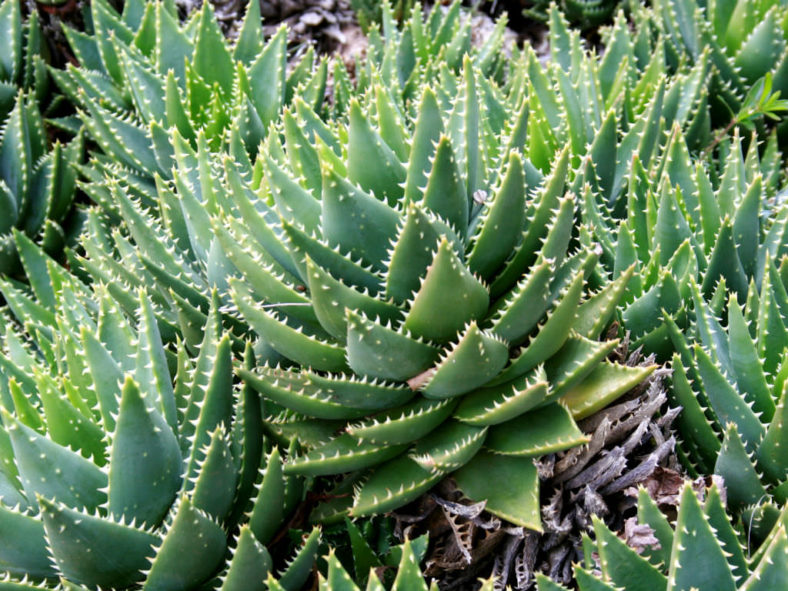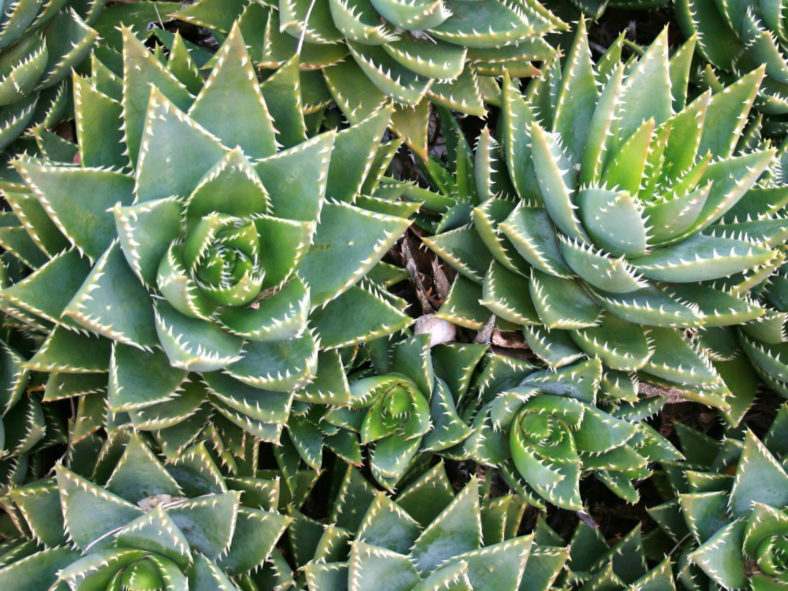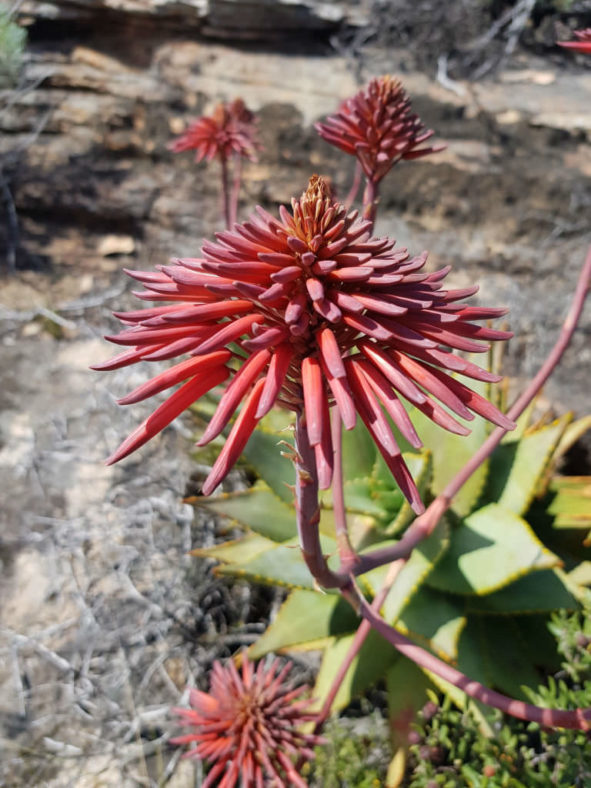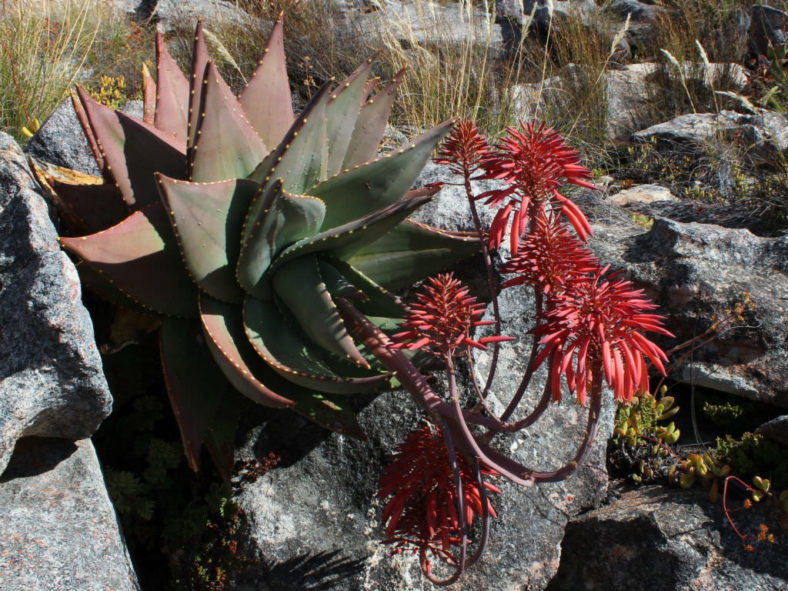Scientific Name
Aloe perfoliata L.
Common Name(s)
Mitre Aloe, Rubble Aloe
Synonym(s)
Aloe mitriformis
Scientific Classification
Family: Asphodelaceae
Subfamily: Asphodeloideae
Genus: Aloe
Origin
Aloe perfoliata is native to South Africa. It grows in the mountainous areas of the Western Cape province.
Etymology
The specific epithet "perfoliata (per-foh-lee-AY-tuh)" means "appearing to have the stem passing through the leaves; having the leaf around the stem at the base" and refers to the way the stem seems to pass through the leaves.
Description
Aloe perfoliata, also known as Aloe mitriformis, is a hardy species that forms small colonies of elongated rosettes. The stems are simple or branched and can grow up to 6.6 feet (2 m) long, erect at first, becoming prostrate with age. The leaves are thick, fleshy, often curved inwards, and have margins with soft white teeth. This succulent is highly variable in the color and shape of the leaves and their arrangement on the stem. The plants that grow in the full sun develop bluish, tightly arranged leaves, while those in the shade have green, more widely spaced leaves.
The flowers are dull to bright red and appear in summer on usually branched inflorescences.

How to Grow and Care for Aloe perfoliata
Light: When growing Aloes indoors, place your plants in a southern or southwest-facing window with plenty of bright, indirect light. Outdoors provide light shade, especially during the hottest parts of the day.
Soil: Plant Aloes in well-drained soil specially formulated for cacti and other succulents, or make your soil mix. Drainage is essential because too much moisture around roots can cause root rot.
Hardiness: Aloe perfoliata can withstand temperatures as low as 20 to 40 °F (-6.7 to 4.4 °C), USDA hardiness zones 9a to 10b.
Watering: These succulents need regular watering but are very tolerant of drought conditions for short periods. Water deeply, but only when the soil is dry. Cut back on watering during the winter months.
Fertilizing: Aloes generally do not require fertilizer but may benefit from the extra nutrients.
Repotting: These plants are not particularly fast-growing and will only rarely need repotting. Repot them in the spring in a container a few inches larger in diameter every few years to keep them from becoming rootbound.
Propagation: Propagating Aloe can be done using offsets, cuttings, or seeds from a mature plant.
Learn more at How to Grow and Care for Aloe.
Toxicity of Aloe perfoliata
Aloe perfoliata is not listed as toxic for people and pets.
Forms, Cultivars, and Hybrids of Aloe perfoliata
Links
- Back to genus Aloe
- Succupedia: Browse succulents by Scientific Name, Common Name, Genus, Family, USDA Hardiness Zone, Origin, or cacti by Genus
Photo Gallery
Click on a photo to see a larger version.


